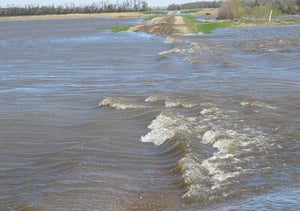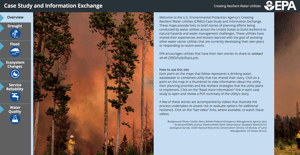 Wastewater systems are vital to ensuring the health of our communities. Yet they are constantly at risk — from both everyday wear and tear and catastrophic natural disasters — so departments must ensure their systems are resilient and sustainable.
Wastewater systems are vital to ensuring the health of our communities. Yet they are constantly at risk — from both everyday wear and tear and catastrophic natural disasters — so departments must ensure their systems are resilient and sustainable.
There are many reasons why collecting sewer assessment data can improve the resiliency of a wastewater infrastructure. Many risks and issues could be immediately resolved or even prevented if the proper precautions are put into place, such as setting aside funds for emergencies. Moreover, preparing for infrastructure damage is increasingly pressing as a result of our changing climate. As this threat grows, the need for gathering and applying data for sewage systems and beyond will become increasingly essential to the safety of communities across the country and around the world.
Here, we’ve collected resources wastewater utilities can use to get a better understanding of resilience and how resiliency practices are being implemented across the nation.
Research Papers
Water Research: Resilience theory incorporated into urban wastewater systems management. State of the art.
Government bodies, utilities, practitioners and researchers have growing interest in incorporating resilience practices into wastewater management. This paper presents a review of studies that discuss resilience in the wastewater treatment sector, with a special focus on understanding how they addressed the key elements for assessing resilience. Furthermore, the paper also discusses the lack of consensus in the definition of resilience, the elements of a resilience assessment, and how it is hindering the implementation of resilience in wastewater management.
Reliable, resilient and sustainable water management: the safe & sure approach.
Global threats such as climate change, population growth and rapid urbanization pose a huge future challenge to water management. To ensure the ongoing reliability, resilience and sustainability of service provision, a paradigm shift is required. This paper presents an overarching framework that supports the development of strategies for reliable provision of services while explicitly addressing the need for greater resilience to emerging threats, leading to more sustainable solutions.
Interactive Resources
EPA: Creating Resilient Water Utilities  EPA’s Creating Resilient Water Utilities website provides links to brief stories about planning efforts being conducted by water utilities across the United States to build resilience to natural hazards and water management challenges.
EPA’s Creating Resilient Water Utilities website provides links to brief stories about planning efforts being conducted by water utilities across the United States to build resilience to natural hazards and water management challenges.
CREAT Risk Assessment Application for Water Utilities
CREAT is a risk assessment application that helps utilities adapt to extreme weather events by better understanding current and long-term weather conditions.
- Discover. Find out which extreme weather events pose significant challenges to your utility and build scenarios to identify potential impacts.
- Assess. Identify your critical assets and the actions you can take to protect them from the consequences of extreme weather events on utility operations.
- Share. Generate reports describing the costs and benefits of your risk reduction strategies for decision makers and stakeholders.
Creating Resilient Water Utilities (CRWU)
EPA's CRWU initiative provides drinking water, wastewater and stormwater utilities with practical tools, training and technical assistance needed to increase resilience to extreme weather events.
Case Studies
Case Study: Southern Nevada Water Authority
Riddled with prior drought events, the Southern Nevada Water Authority took action to protect its water resources and improve its overall resilience to drought and climate change. Examples of these measures include an extensive water conservation program and significant investment in enhancements to Lake Mead’s intake infrastructure. Demand management practices (such as education, incentives, regulation and rates) reduced consumptive water use by 32% since 2000, even as the population has increased by nearly half a million over the same period.
Case Study: Northern Kentucky Water District
In recognition of the challenges already facing Northern Kentucky Water District’s service area — a rapidly growing population and aging infrastructure — the Water District took action to protect its assets, assure continuity of operations and improve overall resilience.
Case Study: Sustaining Scioto Planning Study Columbus, Ohio
The Sustaining Scioto Adaptive Management Plan calls for additional monitoring and analysis of the watershed and water use patterns. Its creators aim to better understand how extreme events and population change are affecting water resources in the basin, raising the potential for additional or modified resilience measures in the mid- and long-term as that understanding evolves.
To stay on top of important wastewater industry news, and to receive special insight and tips, subscribe to WinCan’s newsletter.
Photo Credit: USDA.org





